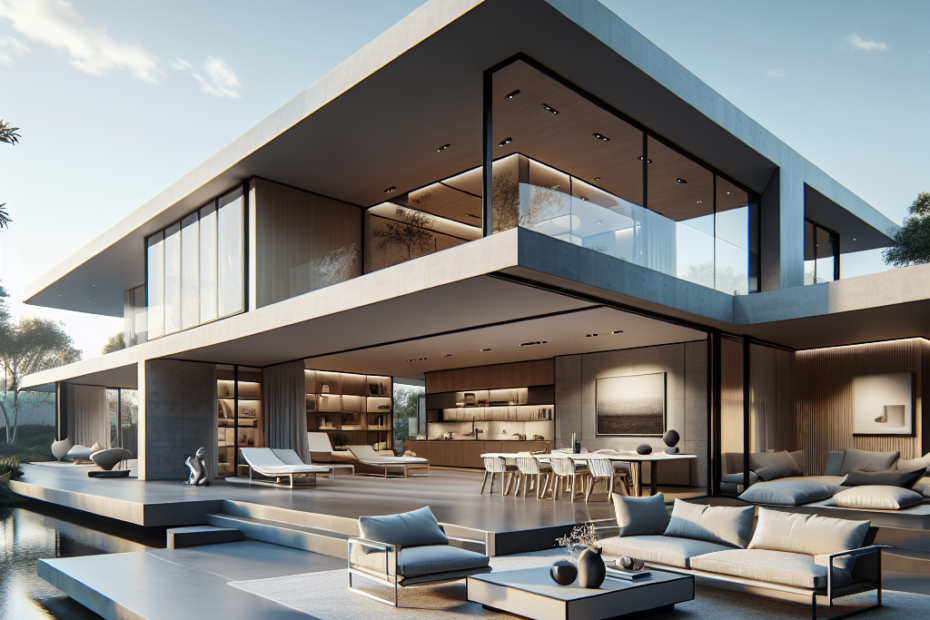Understanding Contemporary Design
Contemporary design refers to the current style of architecture, furniture, and decor. This style emphasizes simplicity, clean lines, and a mix of both natural and man-made materials. They often use neutral colors accented with bold hues, creating a perfect balance between calm and vibrant. According to Architectural Digest, over 58% of new homeowners prefer contemporary design for its versatile and timeless appeal.
The Key Features of Contemporary Design
To achieve a contemporary look, homeowners should focus on several key features:
- Open Spaces: Contemporary design often involves open floor plans that create a sense of flow and spaciousness.
- Neutral Colors: Walls are often painted in neutral shades such as whites, grays, and beiges. Bright colors are sparingly used for accents.
- Minimalistic Approach: This style focuses on functionality, so furniture and decorations are kept to a minimum.
- Natural Light: Large windows and glass doors allow for plenty of natural light, making spaces feel airy and bright.
- Mixed Materials: A mix of natural and industrial materials, such as wood, metal, and glass, is commonly found in contemporary homes.
Incorporating Contemporary Design in Different Areas of the Home
Let’s explore how they can incorporate contemporary design into various parts of their home:
Living Room
In the living room, they can use a neutral color palette with pops of color in pillows, rugs, and artwork. A leather sofa paired with a glass coffee table, sleek shelves, and minimal accessories can create a modern vibe. They should provide adequate natural light by using large, unobstructed windows.
Kitchen
Contemporary kitchens often feature clean lines and uncluttered surfaces. They might choose stainless steel appliances, minimalist cabinetry, and stone countertops. According to a Houzz survey, 42% of individuals doing a kitchen renovation favor contemporary styles.
Bedroom
In the bedroom, they should aim for a serene and clutter-free environment. They can use neutral colors for walls and beddings, adding textures with throw blankets and pillows. Sleek, built-in wardrobes and minimalist furniture will keep the space looking modern and organized.
Bathroom
For bathrooms, a minimalist approach works best. They might use a combination of glass and stone, complemented with chrome fixtures. Floating vanities and walk-in showers with frameless glass doors are popular choices.
Using Technology in Contemporary Design
Technology plays a significant role in contemporary design. Smart home devices, such as automated lighting, smart thermostats, and voice-activated assistants, can seamlessly integrate with the modern aesthetic. According to a report by Statista, 34% of households in the United States have adopted smart home technology for convenience and energy efficiency.
Key Takeaways
- Contemporary design focuses on simplicity, clean lines, and minimalistic decor.
- Neutral colors and natural light are essential in maintaining a contemporary look.
- Different areas of the home can reflect contemporary style through open spaces and mixed materials.
- Technology integration helps in enhancing the functionality of contemporary homes.
Statistics on Contemporary Design Preferences
| Aspect | Statistics | Source |
|---|---|---|
| Preference for Contemporary Design | 58% | Architectural Digest |
| Kitchen Renovations | 42% | Houzz Survey |
| Smart Home Technology Adoption | 34% | Statista |
FAQs
1. What are the main characteristics of contemporary design?
Contemporary design emphasizes simplicity, clean lines, and a mix of both natural and industrial materials. It often features neutral colors and minimalistic decor.
2. How can I make my living room look contemporary?
Use a neutral color palette with bold accents in pillows and artwork, opt for sleek and functional furniture, and ensure ample natural light is available through large windows.
3. What materials are commonly used in contemporary design?
Common materials include wood, metal, glass, and stone. These materials create a balance between natural and industrial elements.
4. How does technology integrate with contemporary design?
Smart home devices such as automated lighting, smart thermostats, and voice-activated assistants enhance the functionality and modern appeal of contemporary homes.
5. Why is minimalism important in contemporary design?
Minimalism ensures a clutter-free environment which is key to achieving a sleek and organized look, reflecting the core principle of contemporary design.
